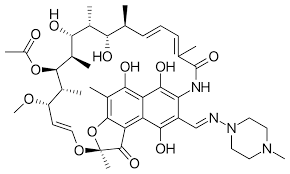Melanin-related disorders, such as melasma, freckles, and post-inflammatory hyperpigmentation, arise from abnormal melanin production, presenting a significant challenge in dermatology and cosmetic science. Existing treatments have limitations and potential risks, highlighting the urgent need for safer and more effective anti-melanogenic agents. Drug repurposing, a strategy that explores new therapeutic uses for existing drugs, offers a cost-effective and time-saving approach to drug development. Considering this, rifampicin, an antibiotic typically used to treat tuberculosis and leprosy, was investigated for its potential as a cosmeceutical agent due to its reported tyrosinase inhibitory activity. This study aimed to evaluate rifampicin’s anti-melanogenic effects and its underlying mechanisms, as well as its safety for topical application.
Methods:
B16F10 melanoma cells and human epidermal melanocytes (HEMn-MP) were treated with rifampicin to assess its impact on melanin content and tyrosinase activity. Cell viability was determined using the MTT assay. Western blot analysis was performed to examine the expression of melanogenesis-related proteins and signaling pathways. A primary skin irritation test was conducted on human participants to evaluate the safety of topical application.
Key Findings:
•Rifampicin inhibits melanin production and tyrosinase activity: Rifampicin significantly reduced melanin synthesis and tyrosinase activity in B16F10 cells at non-cytotoxic concentrations6. Specifically, at 40 μM, rifampicin inhibited melanin synthesis by 20.24% and tyrosinase activity by 29.12%.
•Rifampicin downregulates melanogenic enzymes: Western blot analysis revealed that rifampicin effectively reduced the expression of key melanogenic enzymes, including tyrosinase (TYR), tyrosinase-related protein-1 (TRP-1), and TRP-2, in α-MSH-stimulated B16F10 cells2. At 40 μM, rifampicin decreased the expression of TYR, TRP-1, and TRP-2 by 90.83%, 75.89%, and 75.87%, respectively.
•Rifampicin suppresses MITF expression: Rifampicin significantly suppressed the expression of microphthalmia-associated transcription factor (MITF), a key regulator of melanogenesis, in a concentration-dependent manner.
•Rifampicin modulates multiple signaling pathways: Rifampicin inhibits melanogenesis through the GSK-3β/β-catenin pathway by reducing β-catenin expression and GSK3β phosphorylation. It also inhibits melanogenesis via the MAPK pathway by reducing p38 phosphorylation and through the cAMP/PKA pathway by reducing CREB and PKA phosphorylation. Rifampicin’s mechanism of action was found to be independent of the PI3K/Akt pathway.
•Rifampicin is safe for topical use: Primary skin irritation tests showed that rifampicin did not induce any detectable irritation, confirming its safety profile for topical applications.
This study demonstrates the potential of rifampicin as a cosmeceutical agent for treating hyperpigmentation disorders. The novelty of this research lies in repurposing rifampicin, a well-known antibiotic, for its anti-melanogenic properties. Rifampicin effectively inhibits melanogenesis by targeting multiple signaling pathways and key melanogenic enzymes, offering a comprehensive approach to managing hyperpigmentation. Furthermore, its proven safety in skin irritation tests supports its potential for topical applications. Future studies should focus on refining formulations and conducting clinical trials to validate its efficacy and practical utility in dermatological and cosmetic applications.
Link to the study: https://www.mdpi.com/1420-3049/30/4/900

